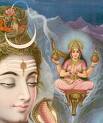People's initiative to create awareness Regarding Ganga

Maa Bhagwati Ganga and Hindu Mythology






The Ganga has an exalted position in the Hindu ethos. It is repeatedly invoked in the Vedas, the Puranas, and the two Indian epics, the Ramayana and the Mahabharata. Ganga is a goddess, Ganga devi, one of two daughters of Meru (the Himalayas), the other being Uma, consort of Shiva. In her youth, Indra had asked for Ganga to be given to heaven to soothe the Gods with its cool waters. The story of its descent to earth appears in slightly different forms in Ramayana (Bala Kanda: Vishwamitra narrates it to the child Rama), Mahabharata (Aranya Parba: Agastya narrates it to Rama), and in the Puranas. These myths are variously dated between 2000 to 400 BC (you may be interested in this over-detailed dateline for Rama's life). The general outline of the story is:
The king Sagara had two wives. By a favour of the lord Shiva, one wife bore him sixty thousand sons, all of whom were to die simultaneously, and the other bore him one son, Asamanjas, who would continue the dynasty. The sixty thousand sons grew to be great warriors, while the mighty Asamanjas caused so much misery to the populace that his father the king had to expel his own son, though a grandson, Ansuman, was left behind. King Sagara once performed the horse ceremony, in which a horse is allowed to roam at will, and is followed by warriors. Stopping the horse is a challenge to war; not stopping it is a compact of obeisance. In this instance, the sixty thousand sons were following the horse, but surprisingly, the horse was lost. After much recrimination, they dug up the entire earth and the underworld, the oceans, searching for the horse. Eventually it was found in a deep cavern, loitering close to where the sage Kapila sat in radiant meditation. The sons gathered the horse but they disturbed the great Kapila (Vasudeva), who was very annoyed, and instantly burnt them to ash with his fiery gaze.
Sagara heard of this fate through Narada, the heavenly wanderer, and sent the grandson Ansuman to undo the harm. Ansuman descended to the underworld and met Kapila, who was much pleased with the youth's bearing and conversation. He granted that the soulse of the sons of Sagara may be released by the waters of Ganga, then resident in heaven. Despite much austerity and prayer, neither Sagara, nor Ansuman after him, nor his son Dilipa, could get Ganga to appear on earth. Finally it was Dilipa's son Bhagiratha, who after severe austerities, propitiated the Goddess, and she agreed to come down to earth. However, the impact of her fall would be so severe, that it could be borne by none less than Shiva himself. Therefore Bhagiratha went into meditation again and obtained Shiva's consent after many more austerities. Finally, the river came down and fell into Shiva's matted hair, and thence to earth. This is the presumed site of the present-day temple at Gangotri. Bhagiratha led the way on horse back and the river followed. In this manner they reached the spot where lay the ashes of the six thousand sons. They were thus liberated, and an ocean formed from the waters there. This is the Sagar Island of today, where the Ganges flows into the Bay of Bengal ("Sagara' is also Sanskrit for ocean).
Many other tales are associated with the Ganga and points on it. Hari (Lord Vishnu) himself bathed in its waters at Haridwar, which is so holy that sins as great as the murder of Brahmins may be washed away by bathing here. Hindus to this day use the water of the Ganga to cleanse any place or object for ritual purposes. Bathing in the Ganga is still the lifelong ambition of many of India's believing masses, and they will congregate on its banks for the tremendously overcrowded Sangam, Sagar Mela or Kumbh Mela which are held on auspicious dates every few years.
The Ganges has many names associated with its many roles in Sanskrit mythology. Bhagiratha himelf is the source of the name Bhagirathi (of Bhagiratha), which is its initial stream, but is also another name for the Hooghly. At one point, Bhagiratha went too close to the sage Jahnu's meditation site, and the disturbed hermit immediately gulped up all the waters. Eventually, after more persuasion from Bhagiratha, the sage yielded the waters, but Ganges retained the name "Jahnavi". Another explanation for the same name is based on the word for knee in Sanskrit, Janu (akin to genus in latin), + the case form for "born of" yield Jahnavi; this is from a version of the story in which the saint released it through a slit at the knee.
Water from the Ganga has the recursive property that any water mixed with even the minutest quantity of Ganga water becomes Ganga water, and inherits its healing and other holy properties. Also, despite its many impurities, Ganga water does not rot or stink if stored for several days

Origin and Its Yatra
The Gangotri Glacier, a vast expanse of ice five miles by fifteen, at the foothills of the Himalayas (14000 ft) in North Uttar Pradesh, is the source of Bhagirathi, which joins with Alaknanda (origins nearby) to form Ganga at the craggy canyon-carved town of Devprayag. Interestingly, the sources of Indus and the Brahmaputra are also geographically fairly close; the former goes through Himachal Pradesh and fans out through Punjab and Sind (Pakistan) into the Arabian Sea. The latter courses for most of its tremendous length under various names through Tibet/China, never far from the Nepal or Indian borders, and then takes a sharp turn near the northeastern tip of India, gathers momentum through Assam before joining the major stream of the Ganga near Dacca in Bangladesh to become the mighty Padma, river of joy and sorrow for much of Bangladesh. From Devprayag to the Bay of Bengal and the vast Sunderbans delta the Ganga flows some 1550 miles, passing (and giving life to) some of the most populous cities of India, including Kanpur (2 million), Allahabad, Varanasi, Patna, and Calcutta (14 million). Dacca, the capital of Bangladesh is on a tributary of the Brahmaputra, just before it joins the Ganga to form Padma. A large number of tributaries join and flow from the Ganges to drain the Northern part of India and Bangladesh.
The Yamuna, which originates less than a hundred miles east of the Bhagirathi, flows parallel to the Ganga and a little to the south for most of its course before merging with the Ganga at the holy city of Allahabad, also known as Triveni Sangam (literally, Three-way Junction, the third river being the mythical Saraswati which is also supposed to be an underground river). New Delhi, capital of India, and Agra, site of the Taj Mahal are two of the major cities on the Yamuna.
The largest tributary to the Ganga is the Ghaghara, which meets it before Patna, in Bihar, bearing much of the Himalayan glacier melt from Northern Nepal. The Gandak, which comes from near Katmandu, is another big Himalayan tributary. Other important rivers that merge with the Ganga are the Son, which originates in the hills of Madhya Pradesh, the Gomti which flows past Lucknow, and the Chambal made notorious by the ravines in its valley which are noted for lawlessness and banditry

The delta of the Ganga, or rather, that of the Hooghly and the Padma, is a vast ragged swamp forest (42,000 sq km) called the Sunderbans home of the Royal Bengal Tiger who still kill about 30 villagers each year. The silt-carrying waters of the Ganga stains the Bay of Bengal a muddier hue for more than 500 km into the ocean.
Pollution
The major polluting industries on the Ganga are the leather industries, especially near Kanpur, which use large amounts of Chromium and other chemicals, and much of it finds its way into the meager flow of the Ganga. Unfortunately, this is a boom time for leather processing in India, which many view as a form of eco-environmental dumping on the third world, and with the lax and lubricable implementation systems of the U.P. Government, it does not seem likely that this will go down. The world bank report 1992, which focussed on the environmental issues, mentions the dissolved-oxygen and riverborne decomposing material at two points on the Ganga.

However, industry is not the only source of pollution. Sheer volume of waste - estimated at nearly 10 billion litres per day - of mostly untreated raw sewage - is a significant factor. Also, inadequate cremation procedures contributes to a large number of partially burnt or unburnt corpses floating down the Ganga, not to mention livestock corpses.
The Ganga Action Plan has been set up under the Indian Government bureaucracy, and is attempting to build a number of waste treatment facilities, under Dutch and British support, and to collaborate with a number of voluntary organizations. Surprisingly, the Hindu political parties in India are not very active in the efforts to clean up the Ganga, and it is not very high in the general religious agenda.
Please send your video/films on Ganga and its pollution for free telcaste at Ganga TV.through attachment at gangasewak@rediffmail.com
You can also submit photos
Stay connected with ganga sewak samaj members






